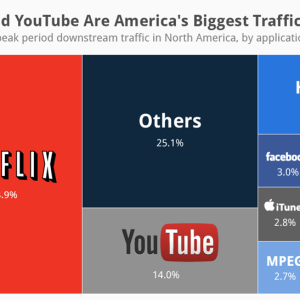Introduction
Who doesn’t want free stuff? Ad fraudsters think everyone does and they’ve created an entire industry around mobile ad fraud. Mobile ad frauds have been soaring ever since the dawn of internet and are a type of scam where crooks use fake ads or click on real ads to generate income. This kind of fraud costs businesses billions of dollars every year, with estimates ranging from $7.2 billion to $19 billion in 2018 alone.
According to ad fraud statistics, in Q2, 2019 advertisers lost $38 million of advertising spend per day to fraudulent traffic in Android. This loss is only forecasted to increase and is anticipated to reach $70 million per day by 2022.
Whether you are a user or a business owner – this guide is for you. In this guide, we’ll cover what mobile ad frauds are, the different types of mobile ad frauds, how it can impact you, and what you can do to protect yourself.
What Are Mobile Ad Frauds?
Mobile ad frauds are the illegal practice of submitting false or misleading advertising claims to generate revenue from clicks or impressions. This can be done through several methods, including click spiking, impression spoofing, bot traffic, and more.
8 Types of Mobile Ad Frauds
Mobile Ad Frauds#1 Click Spiking

In the world of mobile marketing, click spiking has become a common type of mobile ad fraud that can cause an advertiser to be charged for more clicks than actually occurred. This nefarious practice is achieved by artificially inflating the number of clicks on an ad, which can be executed either through automated means or by bribing individuals to click on the ads.
How to Spot Click Spiking:
To detect and prevent click spiking, there are a few methods that can be employed. Firstly, it is advisable to scrutinize your click-through rate (CTR) for any unexpected and sudden spikes, which can be a strong indicator of fraudulent activity. Furthermore, analyzing patterns in the time and location of the clicks can also provide valuable insights. A large concentration of clicks coming from a single location or time may be indicative of a bot generating the clicks. Therefore, to ensure the effectiveness and integrity of your mobile marketing campaign, it is imperative to remain vigilant and watchful against click spiking.
How to Solve a Click Spiking Problem:
In the event that you suspect that you have fallen prey to click spiking, there are several courses of action that you can undertake. To initiate a resolution, the first step would be to communicate with the advertiser or network that sold you the ad. It is plausible that they possess the means to reimburse you for any and all of the clicks that were found to be fraudulent.
Additionally, an alternative approach would be to endeavor to prohibit access to the Internet Protocol (IP) addresses that are responsible for generating counterfeit clicks. This proactive measure can aid in mitigating the effects of click spiking and ensure that your mobile marketing campaign remains efficient and trustworthy.
Mobile Ad Frauds#2 Impression Spoofing

Impression spoofing is an additional form of mobile ad fraud that can wreak havoc on your mobile marketing campaigns. This scheme occurs when an advertiser is charged for a greater number of impressions than actually occurred, which can be accomplished through the application of automated means or by incentivizing individuals to view the ads.
How to Spot Impression Spoofing:
To determine whether or not you have become a victim of impression spoofing, there are several methods that can be utilized. Firstly, it is important to carefully scrutinize your analytics for any spikes in the number of impressions. Should you happen to detect a sudden increase that is not commensurate with an increase in traffic, your ads are likely being artificially inflated, and action should be taken accordingly.
Another approach would be to analyze the timestamps on your impressions, which can provide a clear indication of potential fraudulent activity. For instance, if you observe a great deal of activity during hours of the day when traffic is typically low, such as late at night or early in the morning, this may be indicative of impression spoofing.
Moreover, it is crucial to remain alert for any signs of bots instead of genuine human engagement with your ads. If your click-through rate (CTR) is inexplicably and significantly higher than expected, this could be a warning sign that bots are viewing your ads. Therefore, to ensure that your mobile marketing campaigns remain uncorrupted, it is essential to adopt a proactive approach and stay vigilant against impression spoofing.
What to do if you Suspect Impression Spoofing:
If you think your ads are being spoofed, the first thing you should do is reach out to your ad network or platforms to let them know, just like you do with click spiking. They may be able to refund you for the fraudulent impressions.
You can also try to combat impression spoofing by using fraud detection software. This type of software can help to identify and filter out invalid traffic, so you’re only paying for genuine impressions.
Mobile Ad Frauds#3 Bot Traffic

When it comes to mobile ad frauds, bot traffic is yet another devious tactic that can leave advertisers feeling helpless. In this scenario, an advertiser is charged for clicks or impressions that are generated by automated software rather than genuine human engagement. This fraduster activity is achieved by applying malware to generate fake traffic or by using a real software to mimic the human behaviour.
How to Spot Bot Traffic:
Detecting bot traffic is not as hard as it seems, as there are several signs to look for. Examine if the source is emerging from the same IP addresses or devices, analyze the location of the traffic, and check if its origin is from the countries where you are not typically advertising. This should be a red flag and is suspicious if you have checked out yes for the ones above.
Finally, the behavior of the users should be taken into account, and if they are staying on your site for uncharacteristically lengthy periods or clicking on a large number of ads, this is another indication that the engagement is fraudulent.
How to Protect Yourself Against Bot Traffic:
To safeguard yourself against bot traffic, it is imperative to utilize an ad fraud detection tool. By adopting this approach, you can identify and block suspicious traffic before it can compromise your campaigns. In addition, blacklisting certain IP addresses and devices that are known to be associated with bot traffic is another method for preventing this fraudulent activity from affecting your mobile marketing efforts.
Mobile Ad Frauds#4 Ad stacking

Ad stacking, an insidious type of mobile ad fraud, is a thorn in the side of advertisers worldwide. It occurs when multiple ads are served on top of each other, essentially concealing some of the ads and reducing the visibility of the entire campaign. Ad stacking can be accomplished through placing ad tags in strategic places on a website or by using automated means to generate fake traffic.
How to Spot Ad Stacking:
Detecting ad stacking requires examining of the source code of the website or the application and is considered complex compared to other techniques. However, the easy way to detect is if you notice the application serving multiple ads at once stacking on each other that are popping up annoyingly or that there are several ad tags on a page.
Impact of Ad Stacking:
Ad stacking is a significant problem in the world of advertising, leading to lost revenue, decreased ad efficiency, and frustration among users. This practice bombards consumers with an overwhelming number of ads, making it difficult to find the content they desire. As a result, users may become annoyed, reducing the effectiveness of the ads and causing them to miss out on potential revenue opportunities. It is essential to combat ad stacking to protect your business’s bottom line and ensure that users have a positive experience while engaging with your content.
How to Prevent Ad Stacking:
To prevent ad stacking, companies can employ automated tools to block suspicious traffic and monitor their ad placements. Avoiding placing too many ads on a page or in an app is also a good idea since it can increase the likelihood of ad stacking. It’s critical to take action against ad stacking to protect your ad campaigns and ensure that users have a positive experience on your site or app.
Mobile Ad Frauds#5 Hijacking

Hijacking, a type of mobile ad fraud, is a vicious exertion where an advertiser’s advertisements are displayed on unauthorized websites or apps without their concurrence. This fraud can be carried out by unauthorized placement of announcement markers on illegitimate websites or through the use of automated tools that induce fake business.
How to Spot Hijacking:
Detecting hijacking can be quite challenging, but there are a few signs to watch out for:
- Firstly, keep an eye on your website’s traffic source reports to see if any suspicious sources are driving traffic to your website.
- Next if you notice a sudden drop in click-through rates (CTRs), it indicate that your ads are being displayed on low-quality websites or apps.
- Similarly, a drop in conversions may also indicate that users clicking on your ads are not interested in your product or service.
- And, if there is a sudden increase in advertising costs, it could be a sign that you are paying for fake traffic.
How to Protect Yourself Against Hijacking:
Shielding yourself from hijacking necessitates a proactive attitude. Primarily, you must guarantee that your ads are solely showcased on websites and apps that you have greenlit. Secondly, it is vital to regularly scrutinize your traffic source reports and CTRs to expose any atypical trends. Thirdly, you may want to contemplate leveraging a fraud detection service to aid you in detecting hijacking endeavors before they can wreak havoc on your enterprise.
Mobile Ad Frauds#6 Click Injection

Have you ever been browsing a website, minding your own business, only to have an ad appear out of nowhere? Well, if you have, you might have just experienced click injection. This nefarious form of mobile ad fraud is quite insidious as it involves charging an advertiser for clicks that weren’t actually generated by the user who saw the ad.
The perpetrators of this fraud use a variety of methods to pull off this heist, including placing ad tags in strategic locations on a website or using automated means to generate fake traffic. The end result is that advertisers end up paying for clicks that were not genuinely generated by the user. This can cause significant financial losses and also lead to decreased trust in the advertising ecosystem.
How to Spot Click Injection:
Click injections happens without users knowledge and can be hard to spot if you do no know where to start looking for or what happens. Here are 4 isntances:
1. Sudden increases in traffic or clicks from unknown sources
2. Unexpected changes in conversion rates
3. Ads that appear in unexpected places on a website
4. Clicking on an ad leads to an error page
Should you find yourself ensnared in the web of click injection, the optimal course of action would be to reach out to the advertiser or website proprietor and apprise them of the situation. With any luck, they may be able to implement measures to forestall any further incidents of this nature.
Mobile Ad Frauds#7 Click Farms

Click farms, although not necessarily resulting in mobile ad fraud, are frequently utilized to generate fake traffic that is later used to commit fraud. These illicit operations hire people to click on ads or visit websites in exchange for money, either manually or through automated software.
How to Spot Click Farms:
Detecting click farms is a complicated task that requires vigilance and attention to detail. First, examine the traffic patterns for your ad campaigns. If you notice an abrupt increase in traffic from a specific region or country, it could be a sign of click farm activity. Second, look at the engagement metrics for your ads. If you observe a high number of clicks but little engagement, such as visitors not staying on your website for more than a few seconds, this may be another indication of a click farm.
Finally, utilizing fraud detection software is a highly recommended course of action to identify click farms. The software employs a range of techniques to uncover fake traffic, including IP address analysis and bot detection.
How to Protect Against Click Farms:
To shield yourself from click farms, consider targeting your ads to a particular region or country so that they are shown only to genuine users, minimizing the likelihood of click farm activity. You can also use fraud detection software to obstruct traffic from known click farms. Finally, keeping an eye on your traffic and engagement metrics and thoroughly investigating any unusual spikes or dips is essential.
Mobile Ad Frauds#8 Fake installs

The illicit act of a fraudster paying to have an app installed on a user’s device is known as a fake install, and it’s employed to generate false traffic or commit click injection.
How to Spot Fake Installs:
Detecting fake installs can be challenging; however, there are a few tell-tale signs to look for, including:
1. An abnormally high volume of apps installed from a single IP address or device.
2. A sudden and unusual spike in app installs
3. Installs from unfamiliar countries where the app is not well-known or popular
4. Device IDs that are eerily identical or very similar.
When any of these signs appear, a closer inspection is recommended, and employing a tool such as Apptopia can aid in tracking app installs and identifying patterns that might indicate fraud.
What’s at Stake:
The negative consequences of fake installs are significant and may result in financial losses for app developers and publishers, in addition to creating problems for users as fraudsters may utilize fake installs to carry out click injection and other fraudulent activities.
How to Protect Yourself From Fake Installs:
To guard against the insidious threat of fake installs, it is imperative that you remain vigilant and employ a multifaceted approach to app security. One crucial step is to select a reputable and well-known app store, which can serve as a bulwark against the rampant proliferation of fraudulent apps. Additionally, it is incumbent upon you to keep a close eye on your app’s install data, scrutinizing it with a critical eye for any signs of suspicious activity that may portend the presence of insidious ad fraud.
To further augment your app’s security, you should consider mandating that users create an account prior to installing your app, which can act as a potent barrier against the machinations of malevolent actors seeking to surreptitiously install fraudulent apps. Moreover, utilizing cutting-edge fraud detection tools like Apptopia can enable you to proactively track your app’s installs and ferret out pernicious patterns that might indicate the presence of sophisticated botnets or other pernicious ad frauds that could potentially wreak havoc on your app’s reputation.
It is crucial to recognize that these aforementioned examples of ad fraud only scratch the surface of the vast array of threats that exist in the ever-evolving landscape of app security. From insidious malware to perniciously sophisticated botnets, it is clear that the threat of ad fraud is a persistent and ever-present danger that requires constant vigilance and proactive measures to defend against.
How Do Mobile Ad Frauds Impact You?
The deleterious effects of mobile ad frauds can permeate both the user and business domains, casting a long shadow of malevolence that can have far-reaching consequences for all parties involved. As a user, you may unwittingly find yourself ensnared in a labyrinthine web of pop-up ads that can bombard you incessantly, leaving you feeling overwhelmed and helpless in the face of insidious ad frauds.
Beyond this, the surreptitious collection and sale of your data by unscrupulous fraudsters can shatter the delicate balance of trust that exists between users and advertisers, eroding the fundamental tenets of privacy and transparency that undergird the modern app ecosystem. Worst of all, the unwitting download of pernicious malware onto your device can compromise the very foundations of your digital security, leaving you vulnerable to a host of cyber threats that can wreak havoc on your personal and financial wellbeing.
For businesses, the impacts of mobile ad frauds can be even more severe, striking at the very heart of their financial viability and reputational integrity. Fraudulent clicks can siphon away precious advertising budgets, leaving business owners grappling with the crushing weight of financial losses that can threaten to upend their very survival. Moreover, fake installs can compound these losses, further eroding their already fragile bottom line.
Beyond this, the insidious nature of mobile ad frauds can take a toll on businesses’ reputations, undermining their hard-won trust with users and customers, and making it increasingly difficult to engender their loyalty and patronage. Whether it is through the deployment of sophisticated botnets or other pernicious ad frauds, the threat of mobile ad frauds is a pervasive and persistent menace that demands constant vigilance and proactive measures to defend against.
How to Protect Yourself From Mobile Ad Frauds?
Mobile Ad Frauds For Users
User can protect themselves from mobile ad frauds in a few common ways, including:
1. Be aware of the different types of fraud that exist: Deep understanding and knowledge of different types of mobile ads can help you to understand and know fraudsters better and prevent yourself from becoming a victim of mobile ad fraud.
2. Keep an eye on your device: Install necessary software in your device and make sure the software you installed has several features and performs advanced checks. Regularly perform such advanced and manual checks, and make sure you have an updated version of software on your system.
3. Use a fraud detection tool: You can use tools like AppBrain Ad Detector and others can help to identify and block malicious ads that will help you to browse the web with added security and peace of mind.
4. Be cautious of clicking on ads or downloading apps: Be cautious when clicking on links or downloading apps that are not secure. Usually, if you are using a good web broswer, you should be warned when you accessing an unauthorized or malicious website. Do not click links and download any documents or apps when you are not sure about the safety! Only download apps from reputable and trustworthy sources, and avoid the allure of suspicious or too-good-to-be-true offers that may harbor hidden threats like malware or other ad frauds.
By taking these proactive measures and remaining vigilant in your defense against mobile ad frauds, you can help to ensure the safety and security of your device and your personal information.
Mobile Ad Frauds For Business Owners
Business owners can prevent mobile ad frauds easily if they inform themselves with a few suggestions:
1. Use multiple ad networks: Mobile ad frauds may be more popular where there is only one ad network and to prevent such a thing from happening, make sure you have multiple ad networks at your service.
2. Monitor your data: If you are suspicious that there an unexpected or unusual activity on your system, investigate further and take immediate action to prevent from losing sensitive data.
3. Use anti-fraud tools: Install reliable anti-fraud tools to make sure you can detect and prevent any suspicious activity on the system before the damage is done.
4. Be cautious with new partners: Before working wiht new partners, make sure they are authentic and do your research to avoid any frauds or spammers.
5. Educate your team: Educate your employees on the types of mobile ad frauds and how to prevent from encountering them or to take the necessary measures if encountered.
If you miss to take immediate action on the mobile ad frauds, you are going to get into a serious problem that is only going to get worsr unless the action is taken. Keep an eye on your device activity and immediately report any action that may seem unusual, for businesses or users this is a way to avoid from your sensitive data being trashed and misused.
Additonally, business owners must be especially careful as there is more at risk on the entirety of the business even if one of their system is compromised. Make sure you follow the protocols and finally, educate your team so they are aware of the risks and know how to spot them.
FAQs On Mobile Ad Frauds
1. What is background ad activity?
Background ad activity, the murky underbelly of mobile advertising that takes place surreptitiously when users are not actively using their devices. Lock screen ads and notification banners are some examples of background ad activity that users may come across.
2. What happens after I click on a malicious ad?
The outcome of clicking on a malicious ad can range from mild to severe. Once a user falls prey to the trap of clicking on a malicious ad, they may be transported to a counterfeit website that siphons off their sensitive information, or they may get their device infected with nefarious malware. To add to the misery, one may also witness a surge in unwanted pop-up ads that swamp their device.
3. How can I tell if an ad is fraudulent?
The quest to identify fraudulent ads can be tricky, but not impossible. One can start by scrutinizing the URL of the website that’s displaying the ad. If the URL appears shady or contains anomalous characters, it’s a red flag that it might be a counterfeit website. Moreover, watch out for ads that seem too-good-to-be-true, promising lucrative deals or freebies. Lastly, be cautious of ads that appear on unfamiliar websites, as they might be a part of a larger scam.
4. I think I may be a victim of mobile ad fraud. What should I do?
When grappling with the threat of mobile ad fraud, there are various steps one can take depending on their situation. Start by meticulously scrutinizing your device for any red flags, such as unusual activity or sneaky malware. Additionally, poring over your financial records and identifying any dubious transactions may help you in your fight against ad fraud. As soon as you have evidence, it’s crucial to alert your device manufacturer or carrier without delay. To shore up your defenses, don’t hesitate to switch up any passwords that may have been compromised, and stay vigilant moving forward.
5. I’m a business owner. How can I protect myself from mobile ad frauds?
To start, using multiple ad networks can help reduce your reliance on just one. Moreover, staying vigilant by monitoring your data for unusual activity can help you catch fraudulent activity early on.
Utilizing anti-fraud tools can also serve as an extra layer of protection against mobile ad frauds. Lastly, when working with new partners, it’s essential to conduct due diligence and thoroughly vet them before entering into any agreements.
Conclusion
Mobile ad fraud is an alarming issue, especially since we have become reliant on our mobile devices. Therefore, it is crucial to understand the various types of mobile ad fraud and how to shield oneself against it.
After going through this guide, you have gained valuable insights on the essential measures to take to avert mobile ad fraud. By adhering to the guidelines highlighted in this guide, you can safeguard yourself and your enterprise from the perils of mobile ad fraud.
If you require assistance launching your mobile marketing initiative, you can depend on 12 Channels. Our industry expertise enables us to create a tailor-made mobile marketing campaign that suits your distinct requirements and objectives. Get in touch with us today to discover more.

























